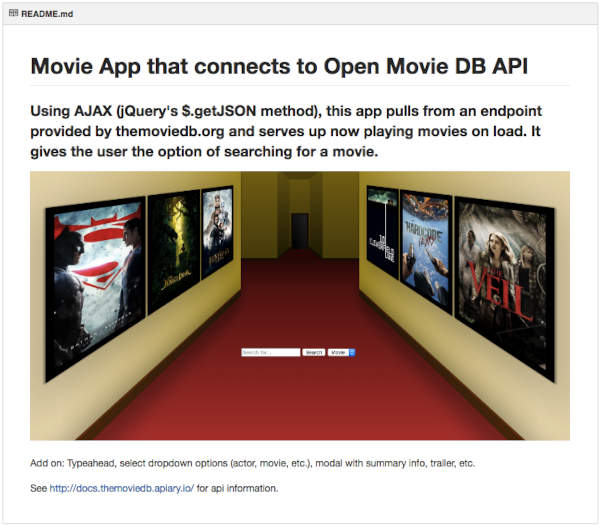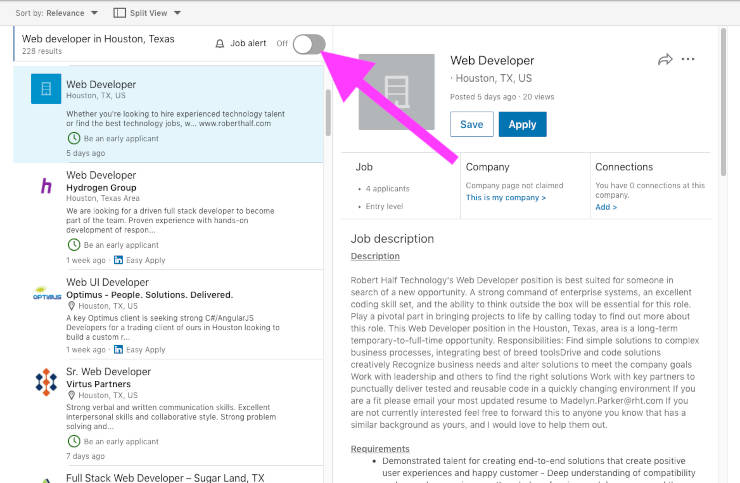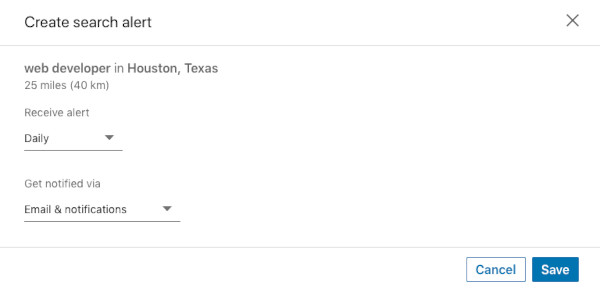5 Helpful Tips for New Developers' Job Search
We're always thinking of ways for our students to increase their odds of successfully finding a career in development shortly after (or even during!) our 16-Week Immersive Bootcamp. We teach students to build a great portfolio, and encourage them to identify the skills they have outside of coding that are useful in a programming role.
We've come up with many ways to set our students apart, but there are a few basics that each student must tackle to increase their odds of being successful. Today, I'd like to share 5 things that new coders and students in a programming bootcamp should do as they begin the job search.
Update Your LinkedIn Profile
Updating your LinkedIn profile is essential. By updating your profile, you will begin to build relationships with hiring managers and recruiters, increasing your odds of learning about job opportunities—and getting hired.
As cliche as it might sound, the process of identifying and listing your accomplishments and abilities will build your confidence. And as we all know, confidence is key when it comes to interviewing and landing the job.
I suggest making these updates to your LinkedIn:
Update Your Current Job Title
By updating your current job title, you'll increase the odds of being recognized by recruiters and hiring managers as a potential candidate for specific job opportunities. When updating your title, make sure to include relevant keywords so that hiring managers can find you. Graduates of our program might use "Fullstack Developer" or "JavaScript Developer," for example.
Add Relevant Skills to Your Profile
Updating the skills section of your profile helps you distinguish your specific skill set and makes it easier for hiring managers to find you: According to LinkedIn, people who list at least five skills receive up to 17x more profile views.
To get ideas for the skills you should include, look at some of the job listings you'd like to apply for and identify the key skills the hiring manager is seeking. Add them to your profile and ask your colleagues to endorse you for the skills they've seen you demonstrate. A lot of students resist this advice, but endorsements help ensure you are more likely to be discovered through search.
Include Links to Your Projects and Portfolio Site
Make your project and portfolio links more prominent (and more likely to be clicked) by including them in the summary or experience section of your portfolio. For projects, I always encourage students to include a link to a demo and to the project's GitHub repo.
Let Recruiters Know You're Looking For a Job
LinkedIn now lets you signal to recruiters that you're actively seeking a new role. To turn on this option, go to the Career Interests section of your account. There, you can add more detail about the kind of position you're seeking, from job titles you're considering to the location, industries and company size you're looking for. These details are kept private from your public profile and are shared only with recruiters, so you can begin your search quietly if that's your preference.
Get Your GitHub Profile And Repos Ready
Perfecting your GitHub profile and creating README files for key projects is another resource students need to leverage. When sharing work with an employer, you need to make sure the employer understands what they are viewing and a README file included in your GitHub repo helps tremendously. It's not uncommon for a non-technical recruiter or hiring manager be the first person to screen your resume and portfolio, and in these cases it is imperative for you to explain exactly what you've built, why and which skills you used.
Here's a great example.
- The title clearly explains the gist of the project.
- The description gives more detail about the tech used and what the app does for the user.
- The included screenshot gives a good sense of what the app looks like.
- Specific technologies are named and there's a link for more information about the API used.

One DigitalCrafts student created a simple yet informative readme file for his Movie API project by listing specific technologies and screenshots. This project was created in week 4 of the program.
Set Up Job Alerts
LinkedIn and other job boards can be very helpful when it comes to searching for job opportunities in specific areas. That said, it would be much easier if the job opportunities where delivered to you directly, right? You can make that happen by setting up alerts on the job boards you like to use.
To set up a job alert on LinkedIn:
Search for a relevant role, then toggle the button at the top left of the search results that says "Job Alert."

In the next screen, you can set the search location and choose how frequently you want to receive alerts. Make your selections and then click "Save." That's it!

Employers will use different terms for positions, so think about the range of titles that could apply to the kind of job you're looking for. You could set up alerts for "web developer," "junior developer" and "JavaScript developer," for example. And don't forget to set up job alerts on Indeed and Glassdoor as well, if you're using those job boards.
Leverage Your Prior Experience
A student's goal is usually to obtain a junior or entry-level developer position, so leveraging your prior experience is important.
As a job-seeker, you will be competing with recent college grads with little or no professional working experience. You can stand out from the crowd by leveraging your prior experience. Whether you have industry knowledge or prior managerial experience, you need to make sure this is communicated clearly in your resume and cover letter when submitting an application.
Become "Interview-ready" As Soon As Possible
This seems simple, but it's very important. Don't wait until the last moment to get ready for the job search—finding the right role can take a while, so the earlier you get started, the better.
We suggest that students in our full-time program begin their job search in week 10, giving them a full 6 weeks to interview before graduation. By that point, all of our students have had the opportunity to receive professional feedback on their resume, practice interviewing, and launch their portfolios.
Even if you aren't in our program, you can follow the same guidelines in your own search. In addition to the suggestions above, you can start attending industry events to make new contacts. Touch base with your references to get them up to speed with your accomplishments, and reach out to your peers for resume critique and to practice interviewing.
What Else?
After you take advantage of these tips, check out our posts on how alum Julie Dyer landed a job at Chick-fil-A, or how John Coppola made the transition from ESL teacher to a developer in New York City. You can also find out how DigitalCrafts can support your career search with our staffing services.
Ready to take the next step in your career and become a developer? Download our course catalog for more information about our full-stack web development bootcamps.
* This post was updated in March 2019.

